so I have a question, lets say I create a rectangle in Java using the paint method, after a 100 ms delay I do super.paint(g), this clears the rectangle previously shown, is there a way to make it re appear?
Thanks!
An example of what I'm talking about is down below, what this program is meant to do is whenever I hold down mouse button 1, it creates a rectangle that goes down and than disapears after mouse button 1 is off. The problem is whenever I hold down mouse button 1 again, the rectangle doesn't appear.
First class:
import java.awt.Color;
import java.awt.EventQueue;
import java.awt.Graphics;
import java.awt.Rectangle;
import java.awt.event.ActionEvent;
import javax.swing.JFrame;
import javax.swing.Timer;
public class RecoilHelper extends JFrame {
static Timer rs;
static int recoil = 540;
static boolean clearRectangle = false;
/**
* Launch the application.
*/
public static void main(String[] args) {
JNativehookRecoilHelp.main(null);
EventQueue.invokeLater(new Runnable() {
public void run() {
try {
RecoilHelper frame = new RecoilHelper();
frame.setVisible(true);
} catch (Exception e) {
e.printStackTrace();
}
}
});
}
/**
* Create the application.
*/
public RecoilHelper() {
initialize();
}
/**
* Initialize the contents of the frame.
*/
private void initialize() {
setBounds(0, 0, 1920, 1080);
setDefaultCloseOperation(JFrame.EXIT_ON_CLOSE);
setUndecorated(true);
setBackground(new Color(1.0f,1.0f,1.0f,0.0f));
setAlwaysOnTop(true);
rs = new Timer(10,(ActionEvent e)->{
repaint();
recoil += 12;
if (recoil>600) {
rs.stop();
}
});
}
public void paint(Graphics g) {
Rectangle r = new Rectangle(960, recoil, 4, 4);
System.out.println(recoil);
super.paintComponents(g);
g.fillRect(
(int)r.getX(),
(int)r.getY(),
(int)r.getWidth(),
(int)r.getHeight()
);
if (clearRectangle) {
super.paint(g);
}
}
}
Second class(tracks mouse button 1 events using JNativehook):
import java.util.logging.Level;
import java.util.logging.LogManager;
import java.util.logging.Logger;
import org.jnativehook.GlobalScreen;
import org.jnativehook.NativeHookException;
import org.jnativehook.mouse.NativeMouseEvent;
import org.jnativehook.mouse.NativeMouseInputListener;
public class JNativehookRecoilHelp implements NativeMouseInputListener {
@Override
public void nativeMouseClicked(NativeMouseEvent arg0) {
// TODO Auto-generated method stub
}
@Override
public void nativeMousePressed(NativeMouseEvent arg0) {
// TODO Auto-generated method stub
System.out.println("Pressed");
RecoilHelper.recoil = 540;
RecoilHelper.rs.start();
}
@Override
public void nativeMouseReleased(NativeMouseEvent arg0) {
// TODO Auto-generated method stub
System.out.println("Released");
RecoilHelper.clearRectangle=true;
}
@Override
public void nativeMouseDragged(NativeMouseEvent arg0) {
// TODO Auto-generated method stub
}
@Override
public void nativeMouseMoved(NativeMouseEvent arg0) {
// TODO Auto-generated method stub
}
public static void main(String[] args) {
GlobalScreen.addNativeMouseListener(new JNativehookRecoilHelp());
LogManager.getLogManager().reset();
// Get the logger for "org.jnativehook" and set the level to off.
Logger logger = Logger.getLogger(GlobalScreen.class.getPackage().getName());
logger.setLevel(Level.OFF);
try {
GlobalScreen.registerNativeHook();
}
catch (NativeHookException ex) {
System.exit(1);
}
}
}
